- Maksutov-Kassegraini teleskoop
- Pealäätse läbimõõt (apertuur): 127mm / Fookuskaugus: 1500mm
- Suurim soovituslik suurendus: 254x (selleks on vaja lisaokulaar)
- Komplektis kaks okulaari: 25 mm, 10 mm
- Suurendus komplekteeritud okulaaridega: 60x, 150x
- Okulaaride kinnituse läbimõõt: 1,25”
- Valguse kogumise omadus (võrreldes palja silmaga vaatamisel): 329x
- Monteering: ekvaatoriline EQ3-2
- Kaal: 7 kg (täis kaal)
- Komplektis: teleskoop, statiiv, aksessuaarid
The MAK 127 telescope is an excellent choice for astronomy enthusiasts looking for small-size equipment that gives great opportunities in observing the Moon and planets of the Solar System. Maksutov’s telescopes have a reduced coma and show only residual chromatic aberration, thanks to which they give very sharp and expressive images. The great advantage of Maksutov’s telescopes is their small length, compact design and generally low weight. Despite its small size, the MAK 127 has a very large focal length of 1500mm, thanks to which we can use significant magnifications necessary to accurately study details on the planets and the Moon.
This type of construction works perfectly well in urban conditions where it is difficult to observe nebular objects of less brightness in a bright sky. The telescope has a 1.25 “eyepiece, an angular cap of this size and 25mm and 10mm eyepieces. Contrary to popular opinion, the MAK 127 is very good at observing deep sky objects, especially the brightest and most compact ones, such as the Great Nebula in Orion , Messier 13 or the Hercules Cluster or the Bode Galaxy Messier 81 and 82 in Ursa Major.
Optical system
A telescope consisting of a spherical meniscus corrector (negative meniscus lens made of chronicle glass), a primary mirror and a secondary mirror located on the inner part of the meniscus. Telescopes of this type have reduced coma, astigmatism and only show residual chromatic aberration. They give sensationally sharp and expressive images. Due to the significant focal length and low light, they are perfect for observing the Moon and planets.
This telescope collects about 235 times more light than the human eye at night, providing the ability to observe objects up to nearly 12.1 magnitude (with naked eye visibility up to magnitude 6). The size of the mirror is also related to the optical resolution, which in this telescope allows it to separate stars that are more than 1.1 ”apart.
Installation
The telescope tube is mounted on a stable EQ3-2 equatorial mount. It is a relatively massive structure, sufficient for photographing the sky with telescopes up to 150mm in diameter, but at the same time light enough that such equipment can be considered quite mobile. The assembly is equipped with precise micromovements, what’s more, it is possible to connect quite advanced drives such as SynScan GoTo (the so-called Upgrade Kit EQ3-2). The EQ3-2 mount allows for the attachment of telescopes equipped with a Dovetail mounting rail in the Vixen standard. In this version, the assembly is equipped with light aluminum legs.
Astronomical observations
1. Solar System
- features on the lunar surface larger than 1.5-2 km in size;
- sunspots and their structure;
- all the planets of the solar system;
- Mercury and Venus phases
- Mars disc, polar caps and dark areas on the surface during the period of good visibility of the planet
- equatorial belts in the atmosphere of Jupiter, the Great Red Spot, Galilean moons and their shadows on the planet’s face during transits, the planet’s covering of the moons
- rings of Saturn with Cassini’s break, in good conditions a shadow cast by the rings on the planet’s face, Titan and several smaller moons
- Uranus and Neptune
- motion of asteroids against the background of stars
- observations of bright comets
2. Stars
- about 1.8 million stars across the sky, shining down to about magnitude 12.1
- double and multiple stars separated from each other angularly by more than 1.1 “.
- the colors of the brightest stars
3. Nebulae objects
- almost all Messier catalog objects
- hundreds of globular clusters
- hundreds of open clusters
- brighter nebulae
- dozens of galaxies
Ground observation
A telescope with this type of optics is not well suited to ground observation. To reverse the image, use the prismatic angle cap, thanks to which we will reverse the image to natural (straight). Together with the angular attachment and the appropriate mounting on which it is attached, it can be used as a simple ground observation instrument.
Specifications:
Optics |
|
| Type | Reflector |
| Type of build | Maksutov |
| Aperture (mm) | 127 |
| Focal length (mm) | 1500 |
| Aperture ratio (f/) | 11,8 |
| Resolving capacity | 0,91 |
| Limit value (mag) | 12,3 |
| Light gathering capacity | 329 |
| Max. useful magnification | 254 |
| Tube weight (kg) | 3,2 |
| Tube construction | Full tube |
Focuser |
|
| Type of build | primary mirror focusing |
| Connection ( to eyepiece) | 1.25 |
Mount |
|
| Type of build | EQ3-2 |
| Mounting type | Equatorial |
| GoTo control | no |
Tripod |
|
| Type | Tripod |
| Material | Aluminium |
| Accessory plate | yes |
| Canibelle | yes |
Included accessories |
|
| 1.25” eyepieces | 25mm, 10mm |
| Deviating optics | 1.25″, 90° star diagonal |
| Finder scope | Red dot finder |
| Polar finder scope <p> | no |
| Counterweight (piece) | 2 |
General |
|
| Series | EQ-3 |
Area of application |
|
| Moon & Planets | yes |
| Nebulae & galaxies | yes |
| Nature Observation | yes |
| Astrophotography | yes |
| Sun | not recommended (Only with appropriate Sun filter) |
Recommended for |
|
| Beginners | yes |
| Observatories | no |







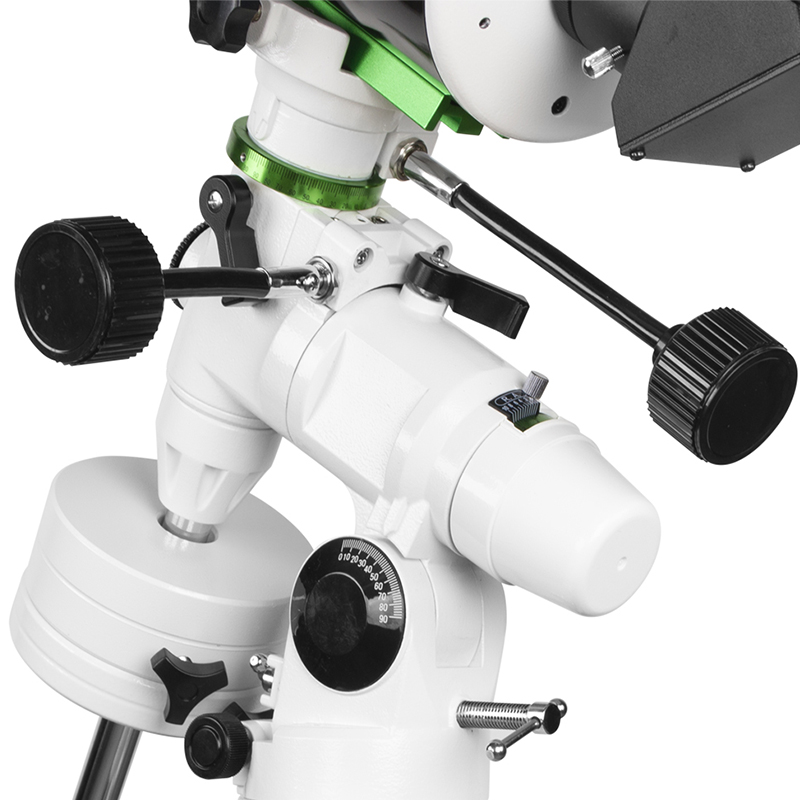

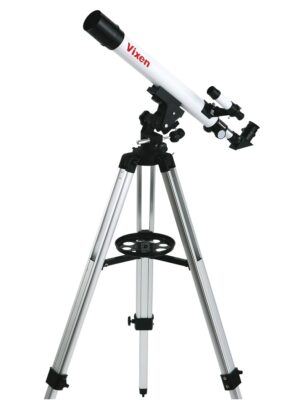
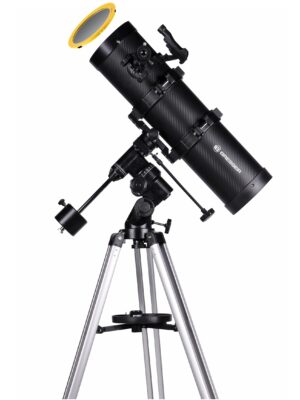
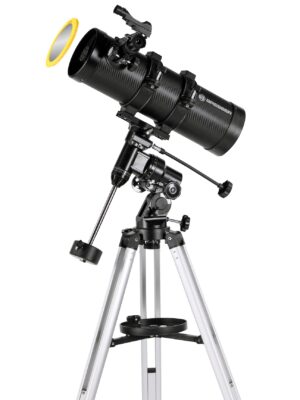

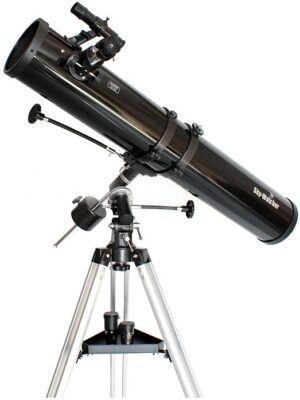
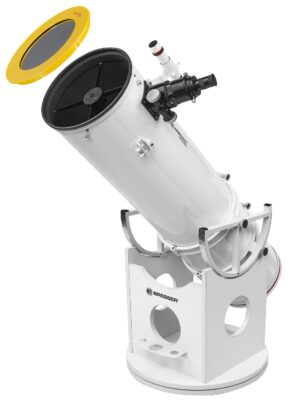

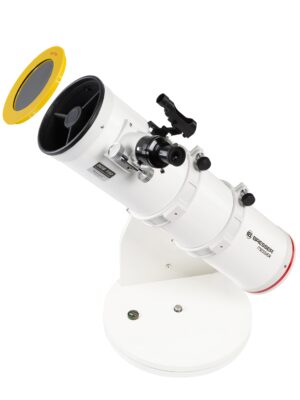
Hinnangud
Tooteülevaateid veel ei ole.